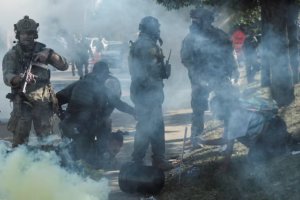In a notable shift in tone, former U.S. President Donald Trump stated on Tuesday that he believes Ukraine is capable of reclaiming all territory seized by Russia since its full-scale invasion began. The comments, made on his Truth Social platform, came shortly after he met with Ukrainian President Volodymyr Zelenskiy on the sidelines of the U.N. General Assembly.
This new position marks a departure from Mr. Trump’s previous assertions that a peace agreement would likely require territorial concessions from both Kyiv and Moscow.
“With time, patience, and the financial support of Europe and, in particular, NATO, the original Borders from where this War started, is very much an option,” President Trump wrote.

The meeting with President Zelenskiy was seen as crucial for Kyiv, which has been actively seeking stronger support from the United States. Many in Ukraine expressed concern following President Trump’s high-profile summit with Russian President Vladimir Putin in Alaska last month, fearing it signaled a softening stance toward Moscow. The Ukrainian government has consistently argued that without significant external pressure, Russia will not end its military campaign.
In his social media post, President Trump also offered a sharp critique of Russia’s military performance, describing its efforts as “aimless” and stating a “real military power” would have concluded the conflict in under a week. Despite this criticism, his administration has not yet implemented the new, tougher sanctions on Russia that Kyiv has requested. Previously, both President Trump and his advisors have suggested that ending the war—the deadliest in Europe in eight decades—might require Ukraine to cede the Crimean peninsula and eastern regions to Russia.
However, Tuesday’s post hinted at the possibility of a more assertive approach. “Putin and Russia are in BIG Economic trouble, and this is the time for Ukraine to act,” the statement read.
President Trump further indicated that the United States would continue its policy of supplying weapons to allies, stating the U.S. will provide arms “for NATO to do what they want with them.” The statement leaves the strategic decisions regarding the use of that equipment largely in the hands of the alliance.




